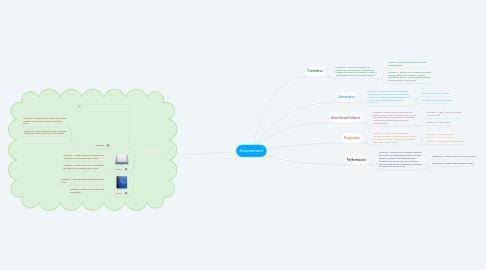
1. Hot Questions
1.1. Opening
1.1.1. Question 1: Based on the cover, what might happen in this story? Why do you think that?
1.1.2. Question 2: What would it be like if a rabbit raced a tortoise? Why do you think that?
1.2. Guiding
1.2.1. Question 1: What would you recommend the turtle do during the race? Why?
1.2.2. Question 2: What would you recommend the rabbit do during the race? Why?
1.3. Closing
1.3.1. Question 1: Describe what happened at the end?
1.3.2. Question 2: Why do you think that happened?
2. Formative
2.1. Definition: In-process evaluation of student's comprehension. It allows the teacher to access the students in order to adjust instruction and provide feedback.
2.1.1. Example 1: Exit Ticket to check student understanding
2.1.2. Example 2: Thumbs Up: Students are asked a question and the response is either: Thumbs up (know), Sideways (kinda know), Thumbs down (I don't know)
3. Summative
3.1. Definition: Used to evaluate the students learning and usually takes place at the end of the instruction period such as the end of a unit. Heavier weighted grade than formative.
3.1.1. Example 1: End of Unit Exam
3.1.2. Example 2: Writing composition
4. Benchmark/Interim
4.1. Definition: Tracks students learning and provides data of where the student is in the learning process, if intervention is needed, or if they are further along with their understanding.
4.1.1. Example 1: CBA (Curriculum Based Assessment)
4.1.2. Example 2: STAAR Test
5. Diagnostic
5.1. Definition: Usually a pre-assessment, teachers are able to use the results to help plan lesson or clear up any misconceptions the student might have.
5.1.1. Example 1: Writing Samples
5.1.2. Example 2: DRA Reading Assessment
6. Performance
6.1. Definition: Assessment is student centered and usually something the student creates instead of simply completing an exam. Students are able to use critical thinking skills and apply the knowledge they learned to create the final product.
6.1.1. Example 1: Create financial portfolio project
6.1.2. Example 2: Create a graph based on data

